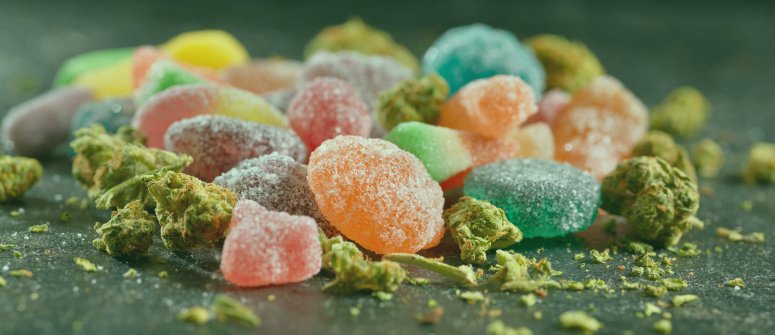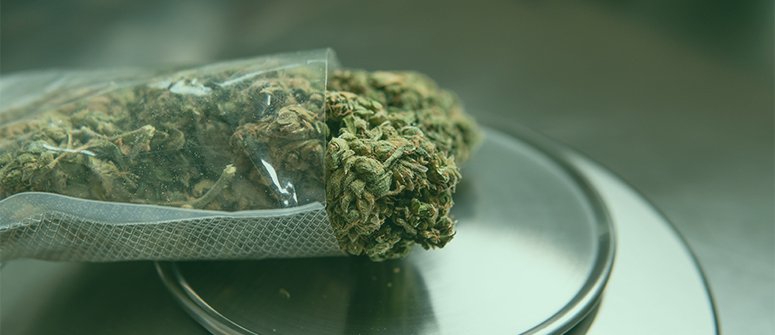Most people have either had a negative encounter with cannabis edibles or know someone who has. Because of its unique method of delivering marijuana into the body, edibles can provide potent, long-lasting effects that can be overpowering for some people. As a result, properly dosing your edibles is critical to a good experience.
In this post, we’ll look at how to dose cannabis edibles and why they’re so much more potent than smoked or vaped weed.
EDIBLE DOSES: A GENERAL OVERVIEW

Before we get into the specifics of dosing cannabis edibles, it’s useful to have a general awareness of the various edible dose ranges and the effects they can generate.
Edible doses are expressed in milligrams (mg) of tetrahydrocannabinol. In most legal cannabis markets, a common edible dose is thought to include roughly 10mg of THC, though this can vary by area. The following is a broad breakdown of micro, low, moderate, high, acute, and macro edible dose ranges and the consequences they may generate.
Microdose (1-2.5mg): Microdoses of THC do not generate intoxication effects. They may, however, generate holistic benefits that gently relax both the mind and body. Microdoses are popular among medical patients who need to relieve symptoms during the day, as well as recreational users looking for a modest boost.
poor doses (3-5mg) of edibles typically induce a high feeling in beginner cannabis users or those with a poor tolerance. If you’re new to marijuana, a 3-5mg dose may make you feel calm and uplifted, joyful, giggly, and social (depending on the strain). However, experienced cannabis users with a THC tolerance will only feel a light buzz. Medical patients frequently report that 3-5mg doses relieve symptoms while causing only modest intoxication effects.
Standard dose (10-15mg) – This dose range is typically the starting point for seasoned cannabis users and results in a fairly noticeable high/stone. Inexperienced users may find the length and intensity of a typical edible dose overpowering, so begin with a lesser dose.
strong dose (20-30mg) edibles are best suited for seasoned cannabis users who are well-versed in THC and have a strong tolerance for its effects. They are not suitable for beginners because they induce severe effects such as extreme euphoria, deep physical sedation, perceptual disturbances, and so on. Medical cannabis users with chronic diseases can take doses of this size to treat a variety of symptoms. If you are a medical marijuana patient and believe you could benefit from medicating with high-dose edibles, consult your doctor.
Acute dose (50-100mg) – Such large edible doses are often reserved for medical cannabis patients experiencing severe symptoms and diseases. At these concentrations, THC can cause long-term intoxication, which may impact the emotions and mental health of inexperienced users or those with mental health difficulties. Before taking a dose of this size, always consult with your doctor.
Macrodose (100-500mg) – These extremely high doses are commonly utilized by medical patients who have difficulty absorbing THC. They should not be used recreationally since they can cause extremely nasty adverse effects.
A NOTE ON THE RISKS OF HIGH THC DOSES
Above, we mentioned some exceptionally high THC concentrations discovered in consumables marketed in legal cannabis shops. It is critical to note that, while these products are legally available in some areas or can be created at home, they offer significant hazards. THC has long been regarded as a safe and non-addictive substance, which is true to some extent—as long as it is taken properly. However, as we understand more about cannabis and its active components, we are also uncovering its dangers, which become more significant when consumed in big quantities.
In minor situations, THC can cause unpleasant side effects such as nausea, vomiting, anxiety, paranoia, or sedation—effects that, while unpleasant, are rarely severe or long-lasting. However, in high dosages, THC can induce more serious adverse effects in persons with limited tolerance or a tendency to mental health problems, as well as young people, notably teens. THC’s more serious adverse effects include psychosis, learning difficulties, addiction, and altered brain development.¹
Whether you manufacture your own edibles or purchase them from a dispensary, coffee shop, or other cannabis store, it is critical to recognize the risks of using high-potency cannabis and to use your edibles wisely.
THE IMPORTANCE OF CALCULATING EDIBLE DOSES

When using cannabis, it is always crucial to dose appropriately. However, this is especially true with edibles because they often take considerably longer to take effect and generate a much more intense and persistent high.
When you smoke a joint or vape, the smoke or vapor you inhale transports delta-9-THC to your lungs, where it is immediately absorbed into the bloodstream and distributed to cannabis receptors throughout your body. Typically, you will feel the effects of smoking or vaping within seconds or minutes of inhalation, with the effects peaking after around 30 minutes. Depending on the dose and your sensitivity to cannabis, the high from smoking a joint or vaping can last for up to 2-3 hours.
When you consume an edible, delta-9-THC is transferred to your stomach and digestive tract, where it is absorbed considerably more slowly—which is why edibles can take up to 30-90 minutes to take effect. Some delta-9-THC from your edibles will enter your bloodstream after being absorbed through the digestive tract, but the majority of it will be metabolized by the liver to form 11-OH-THC, a version of THC that passes through the blood-brain barrier much more easily and is much more potent than regular delta-9 THC.
As a result, an edible containing 10mg of THC produces a far higher high than smoking 10mg of THC through a joint or bong. Furthermore, the effects of edibles peak around the 2-hour mark and can linger anywhere from 6 to 12 hours, depending on your tolerance and dose.
Given the potent effects of edibles, knowing your dosage before chowing down on a brownie or space cake is critical to having a nice experience. Edibles can provide significant alleviation to medical patients while also being enjoyable for recreational users. However, for novice users or when encountered suddenly, an edible high can be extremely unpleasant and overwhelming. SURRON , TALARIA





